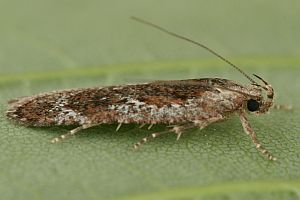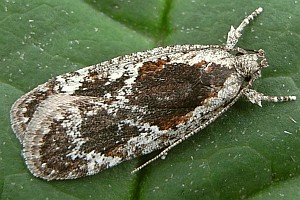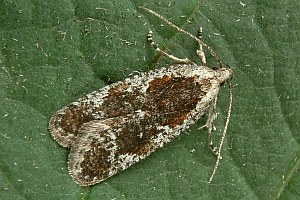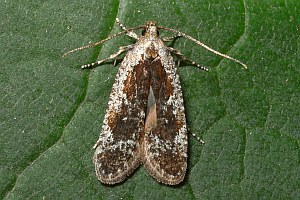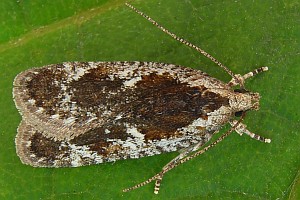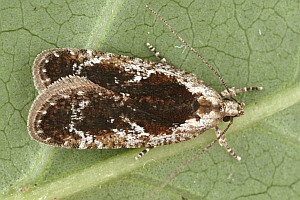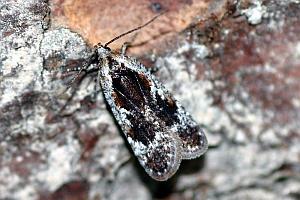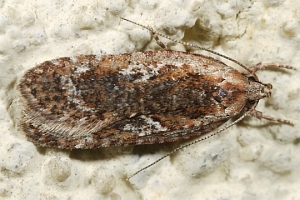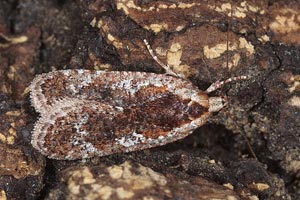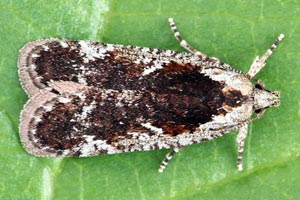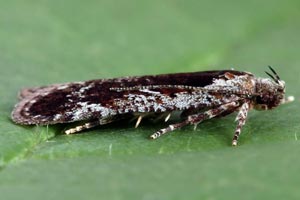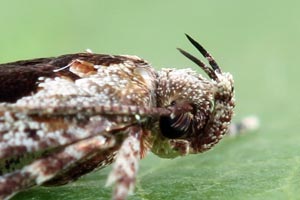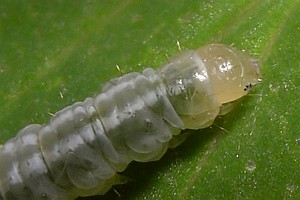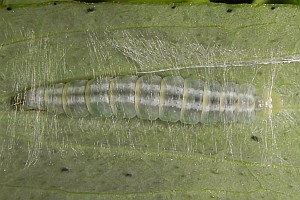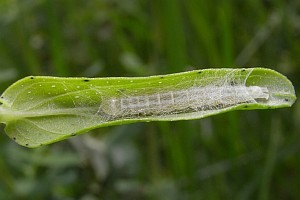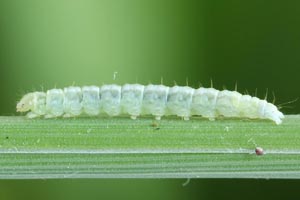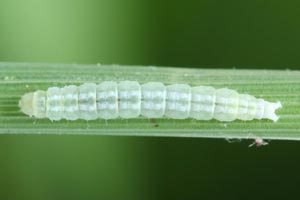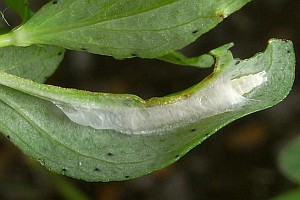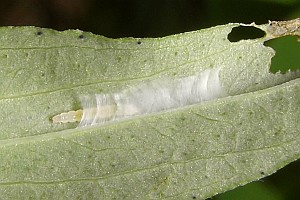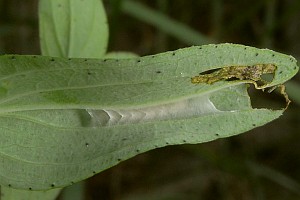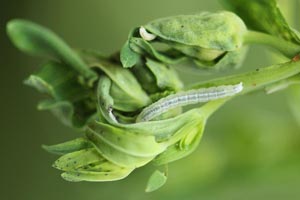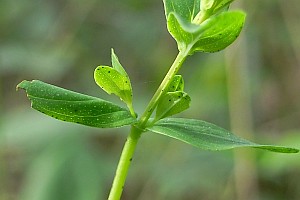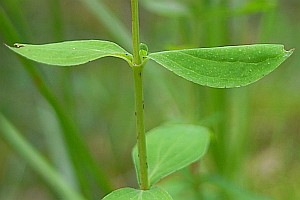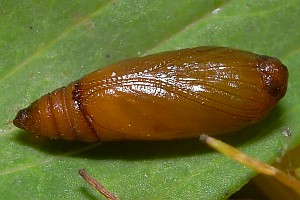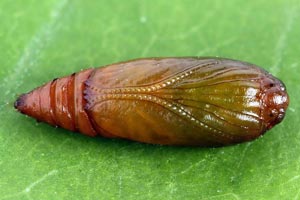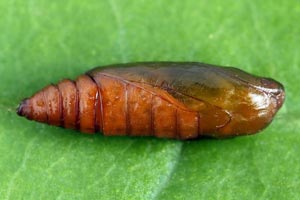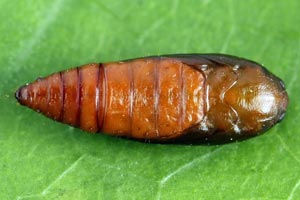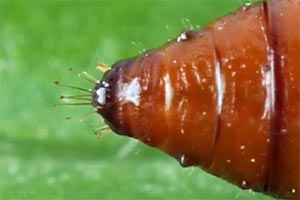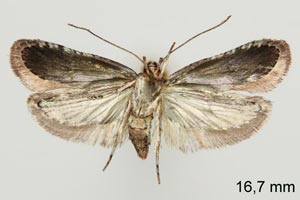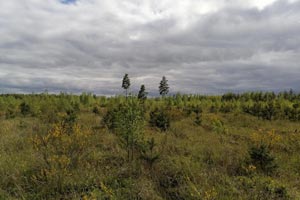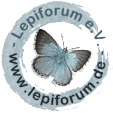

 +18Kontinente:EUAS
+18Kontinente:EUAS
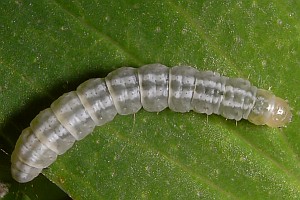
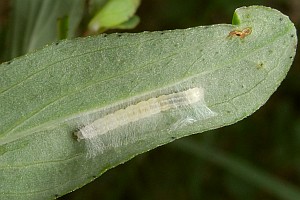
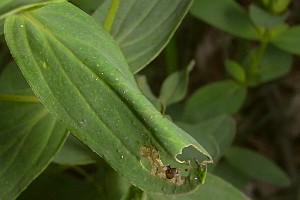
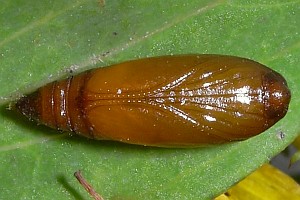
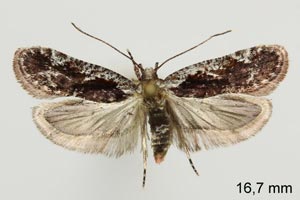
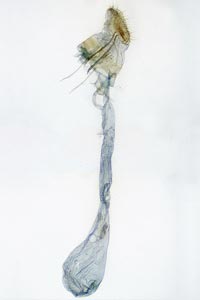
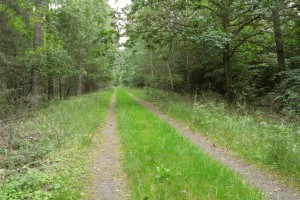
1. Lebendfotos
1.1. Falter
1.2. Ausgewachsene Raupe
1.3. Jüngere Raupenstadien
1.4. Fraßspuren und Befallsbild
1.5. Puppe
2. Diagnose
2.1. Geschlecht nicht bestimmt
2.2. Genitalien
2.2.1. Weibchen
3. Biologie
3.1. Habitat
3.2. Nahrung der Raupe
- [Hypericaceae:] Hypericum perforatum (Echtes Johanniskraut)
- [Hypericaceae:] Hypericum pulchrum (Schönes Johanniskraut)
- [Hypericaceae:] Hypericum tetrapterum (Geflügeltes Johanniskraut)
Meistgenannte Raupennahrungspflanze ist Hypericum perforatum, wobei nicht immer sicher ist, dass genau diese Art gemeint war. Buchner & Corley ([2024]: 89) nennen - unter Berufung auf Peter Sonderegger in litt. - zusätzlich Hypericum pulchrum und Hypericum tetrapterum, was vermuten lässt, dass noch weitere Arten der Gattung genutzt werden.
(Autor: Erwin Rennwald)
4. Weitere Informationen
4.1. Andere Kombinationen
- Haemylis impurella Treitschke, 1835 [Originalkombination]
4.2. Synonyme
- Tinea hypericella auct., nec Hübner, [1817]
- Agonopterix hypericella auct., nec (Hübner, [1817])
- Depressaria liturella ab. subliturella Krulikowsky, 1908
- Depressaria conterminella var. atrella Caradja, 1920
4.3. Taxonomie
Buchner & Corley ([2024]: 89) drücken ihre Verwunderung aus und schreiben: "This species was known as impurella Treitschke, 1835 for many years (e.g. Hannemann, 1953) until Bradley (1966) declared that it was conspecific with hypericella Hübner, 1817 which therefore had priority. This was apparently accepted without question and the name hypericella was used by Hannemann (1976) in his Catalogue of Depressariidae. Why Bradley believed that Hübner's illustration of hypericella was the same as impurella is unclear, as it unmistakably shows A. liturosa with conspicuous black curved mark in the cell (joined oblique dots) and a distinct pale line bordering the basal field, both characters absent fromimpurella. We therefore reinstate impurella as the correct name for this species." Interessanterweise scheint das auch keinem Lepiforumsnutzer aufgefallen zu sein, obwohl wir den Scan von Hübners hypericella hier jahrelang zeigten.
(Autor: Erwin Rennwald)
4.4. Literatur
- Buchner, P. & M. Corley ("2025" [2024]): Microlepidoptera of Europe. Volume 10: Depressariidae. — 605 S.; Leiden, Boston (Brill)
- Hübner, J. [1796-1834]: Sammlung europäischer Schmetterlinge 8: pl. 1-71.
- SCHÜTZE (1931): 139
- Stainton, H. T. (1861): The natural history of the Tineina 6: I-IX, 1-283, pl. I-VIII. London (John van Voorst) – Paris (Deyrolle) – Berlin (E. S. Mittler und Sohn). — Digitalisat auf archive.org: [100-111], [pl. III fig. 1].
- Erstbeschreibung: Treitschke, F. (1835): Die Schmetterlinge von Europa 10 (3): 1-303. Leipzig (Ernst Fleischer).


















